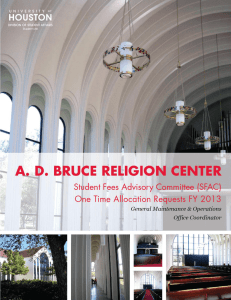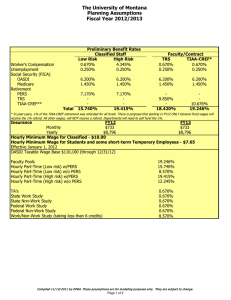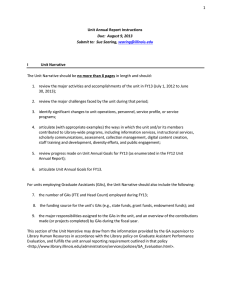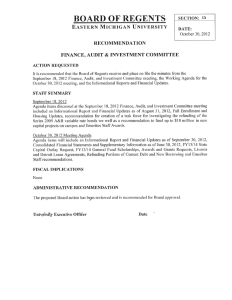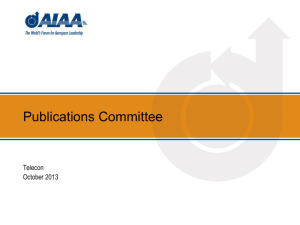Reference 5 - FY13 Operating Budget Guidelines
advertisement
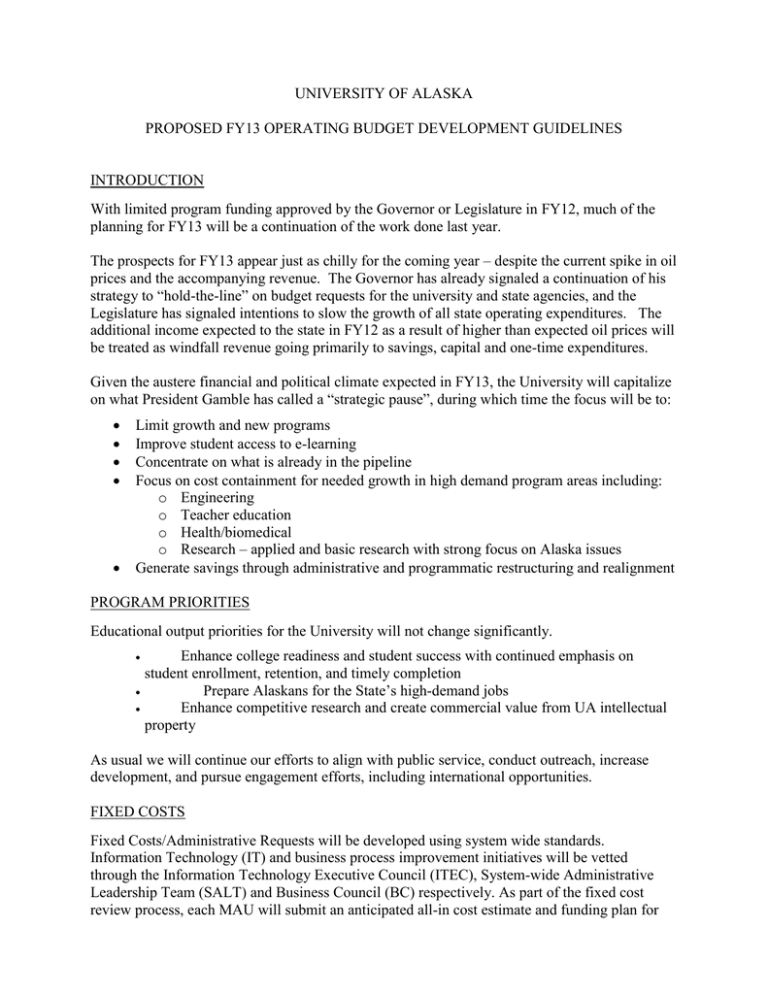
UNIVERSITY OF ALASKA PROPOSED FY13 OPERATING BUDGET DEVELOPMENT GUIDELINES INTRODUCTION With limited program funding approved by the Governor or Legislature in FY12, much of the planning for FY13 will be a continuation of the work done last year. The prospects for FY13 appear just as chilly for the coming year – despite the current spike in oil prices and the accompanying revenue. The Governor has already signaled a continuation of his strategy to “hold-the-line” on budget requests for the university and state agencies, and the Legislature has signaled intentions to slow the growth of all state operating expenditures. The additional income expected to the state in FY12 as a result of higher than expected oil prices will be treated as windfall revenue going primarily to savings, capital and one-time expenditures. Given the austere financial and political climate expected in FY13, the University will capitalize on what President Gamble has called a “strategic pause”, during which time the focus will be to: Limit growth and new programs Improve student access to e-learning Concentrate on what is already in the pipeline Focus on cost containment for needed growth in high demand program areas including: o Engineering o Teacher education o Health/biomedical o Research – applied and basic research with strong focus on Alaska issues Generate savings through administrative and programmatic restructuring and realignment PROGRAM PRIORITIES Educational output priorities for the University will not change significantly. Enhance college readiness and student success with continued emphasis on student enrollment, retention, and timely completion Prepare Alaskans for the State’s high-demand jobs Enhance competitive research and create commercial value from UA intellectual property As usual we will continue our efforts to align with public service, conduct outreach, increase development, and pursue engagement efforts, including international opportunities. FIXED COSTS Fixed Costs/Administrative Requests will be developed using system wide standards. Information Technology (IT) and business process improvement initiatives will be vetted through the Information Technology Executive Council (ITEC), System-wide Administrative Leadership Team (SALT) and Business Council (BC) respectively. As part of the fixed cost review process, each MAU will submit an anticipated all-in cost estimate and funding plan for any new facilities that have been listed in the capital budget, as well as those facilities funded through the 2011 General Obligation Bond. PERFORMANCE FUNDING POOL Each MAU will control the distribution of its FY13 performance funding pool, to be used in support of performance-related strategies. One percent of general funds are the expected funding pool size, although annual circumstances will dictate the exact amount chosen by the MAU for internal reallocation. In the FY13 budget and planning process, MAU performance evaluation and reporting requirements are based on the State of Alaska’s requirements. BUDGET ASSUMPTIONS The budget will be developed using the following assumptions for FY13: Enrollment will increase slightly Externally funded research activity will be flat to slightly up Indirect Costs Recovery (ICR) will increase slightly Tuition rate of 7% (100-400 levels) and 3% (graduate level) Modest compensation increases for staff and faculty FY13 PERS and TRS retirement system employer contribution rates will remain at the FY12 levels (12.56% TRS, and 22.00% PERS) Healthcare costs will continue to increase FY13 BUDGET TIMELINE Below are key dates in the FY13 budget development process. BOR indentifies dates for which the Board of Regents will be involved. June BOR - FY12 Operating and Capital Budget Acceptance BOR - FY12 Operating and Capital Budget Distribution Plans Approval BOR - FY12 Natural Resources Fund Budget Allocation Approval July Initial meeting with the Governor’s Office of Management and Budget (OMB) and Legislative Finance Division to discuss FY13 program themes, fixed costs and capital budget needs August FY13 MAU Operating Budget Requests submitted to Statewide Budget Office including: extraordinary fixed cost increases, new facility operating costs, priority program descriptions, expected non-state funding source(s), revenue estimates by source, and savings claims FY13 MAU Capital Budget Requests submitted to Statewide Budget Office including: capital budget requests and deferred maintenance lists List of expected leased properties and any projects needing potential debt financing FY13 budget meeting of the University of Alaska leadership to present and review MAU budget request priorities (to include a presentation by each Chancellor on the expected outcomes in FY12 and a general discussion of their 3-5 year planning horizon) FY13 MAU Performance Assessments submitted to Statewide Planning and Budget. September BOR - First Review of FY13 Operating, Capital Budget, and Capital Improvement Plan Formal budget meeting with Governor’s Office of Management and Budget (OMB) October MAU Fall Financial Review including MAU Performance Assessment November BOR - FY13 Operating and Capital Budget Request Approval BOR - FY13 Capital Improvement Plan Approval Submit Board of Regents’ FY13 Budget to the Governor’s Office of Management and Budget (OMB)

